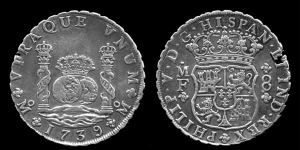
Important Dates in the Monetary History of the United States,Part III, 1787 – The Constitution of the United States
By David Liechty
The Constitutional Convention of 1787 was envisioned as a necessary rectification of the failings of the Articles of Confederation. Changes in the monetary powers granted to Congress were no exception.
Article I , Section 8, Clause 2 of the Constitution grants Congress the power “to borrow Money on the credit of the United States,” which is a significant change from the power granted under the Articles of Confederation “to borrow money, or to emit bills on the credit of the united states.”
Congress’ power under the Articles to emit bills of credit was not carried over into the Constitution. State governments were specifically barred from emitting bills of credit, as well, under Article I, Section 10, Clause 1. Similarly, “the sole and exclusive right and power” granted to Congress by the Articles to “regulat[e] the alloy and value of coin struck by their own authority, or by that of the respective states” was also altered.
While Article I, Section 8, Clause 5 retained Congress’ power “to coin Money, [and] regulate the value thereof, and of foreign Coin,” Article I, Section 10, Clause 1 barred states from coining money. This clause gave a further restriction on the states, understandable in light of the economic chaos immediately preceding the Constitutional Convention, that they not “make any Thing but gold and silver Coin a Tender in Payment of Debts.”
Two provisions in the Constitution make specific reference to “dollars.” Article I, Section 9, Clause 1 indicates the ceiling for a tax of “ten dollars” on the importation of “persons,” and Amendment VII, specifies “twenty dollars” as the required value in controversy at which jury trial must be preserved.
No internal definition for the term “dollar” is given in the Constitution itself, however Vieira has argued persuasively that this term should be understood to be the “dollar” adopted by Congress in 1785 and 1786 (Vieira, Pieces of Eight: The Monetary Powers and Disabilities of the United States Constitution (2002) 134-137 (see here) . That it must be some constant unit of value is evident given the heated debate in the Convention over the slave issue.
The pro-slavery faction would not have conceded to a tax on importation of slaves that could have been manipulated in such a manner as to make importation practically prohibitive. That the Spanish milled dollar, or its equivalent value in weight and fineness, is the “dollar” intended by these provisions is clear, also, given the universal presence of this coin throughout the colonies, and both the Congressional resolution immediately preceding the Convention and legislation afterwards, in 1792.
David Liechty is an attorney who is currently studying for a Phd in Constitution Studies. He is interning with Solari this summer.

